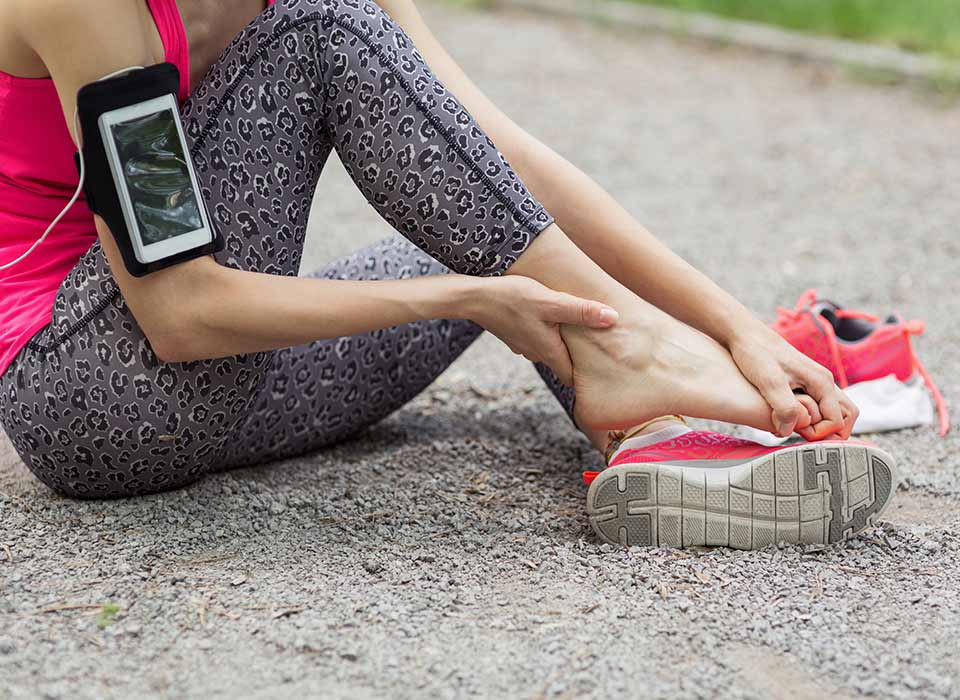Many athletes have some form of weakness or “Achilles heel” in their game or in their physical ability. For athletes who play sports that involve long periods of running (e.g. soccer, basketball, track) their weakness might literally be their “Achilles heel” or technically, Achilles tendonitis.
Achilles tendonitis is an overuse injury of the Achilles, the band of tissue connecting the calf muscles to the heel bone. Most cases can be treated and will improve with at-home remedies under your physician’s supervision. These at-home remedies are also essential to maintain as they can help prevent any flares up in the future.
“Serious cases of Achilles tendonitis can cause severe pain and even lead to the tendon tearing,” explains Paul J. Switaj, MD, a foot and ankle surgeon. “If you are suffering from pain in your Achilles tendon, the earlier you seek medical treatment, the more likely you are to avoid the need for major medical intervention.”
What are the symptoms of Achilles tendonitis?
Typically, Achilles tendonitis pain begins with a dull to mild ache above the back of your heel after running or extraneous walking.
Symptoms may also include
- Stiffness in the morning that improves with light activity.
- Thickening of the tendon.
- Constant swelling that gets worse with activity.
- Extreme pain the day following a workout.
What are the causes of Achilles tendinitis?
Achilles tendonitis is often not related to any specific injury or event. John D. Duerden, MD, an orthopedic surgeon specializing in the foot and ankle, states, “Usually, it occurs from repetitive stress being placed upon the tendon. Athletes and active individuals are hard to slow down, and they tend to push their bodies to do too much, too soon.”
Common causes of Achilles tendonitis are
- Sudden increase in intensity or duration of exercise.
- Lack of stretching before exercise leading to tight calf muscles.
- Growth of extra bones called bone spurs in the heel that rub against the tendon.
Other factors may increase your risk of developing Achilles tendinitis.
- Men are more commonly affected.
- Patients diagnosed with psoriasis or high blood pressure are a higher risk.
- Older age raises your risk.
- Naturally flat feet and obesity put more strain on the tendon.
How do you treat Achilles tendonitis?
Depending on the severity of the injury, self-care methods and non-surgical treatment are usually enough to relieve symptoms. However, patience is encouraged during recovery. It may take a few months for symptoms to completely subside, and it may take even longer if you’ve experienced pain for several months prior to seeking out treatment.
Conservative treatment options include
- Activity modification.
- Rest.
- Ice.
- Over-the-counter anti-inflammatories.
- Orthotic shoe-inserts.
Physical therapy is an excellent course of treatment as the exercises will help you stretch and strengthen your Achilles tendon. Your physical therapist may employ a special type of strengthening exercise called “eccentric” strengthening, which is defined as the contracting or tightening of a muscle as it is getting longer. This type of exercise can cause damage to the tendon if not performed properly, so it should first be conducted under the supervision of your physical therapist. Once mastered, you can do it at home.
Bilateral heel drop
Standing at the bottom of a staircase, place the front half of one foot on the first stair and leave the other foot flat on the ground. The back of the foot on the stair should be off the step, in the air. In a slow controlled motion, lift your heels off the ground and then lower them to the lowest possible point. Repeat for 20 reps.
Single leg heel drop
Similar to the bilateral heel drop, the single heel drop is performed solely on the leg placed onto the stair. This exercise should only be performed after mastering the bilateral heel drop.
If after several months of conservative treatment symptoms persist, your physician may discuss possible surgical treatment options.
Can I prevent Achilles tendinitis?
Although Achilles tendonitis does not typically occur from a specific event, there are several prevention tips that can lower your risk of developing symptoms.
- Increase your activity level gradually, especially if you are just beginning to exercise.
- Make sure your shoes are not worn out. Shoes have a 300-mile lifespan and shouldn’t be more than 3 months old.
- Make stretching a part of your daily routine and always stretch before completing a workout.
- Focus on strengthening your calf muscles to lessen the strain put on your Achilles tendon.
- Mix it up. Change up your workout routine to not over-stress one part of your body.

